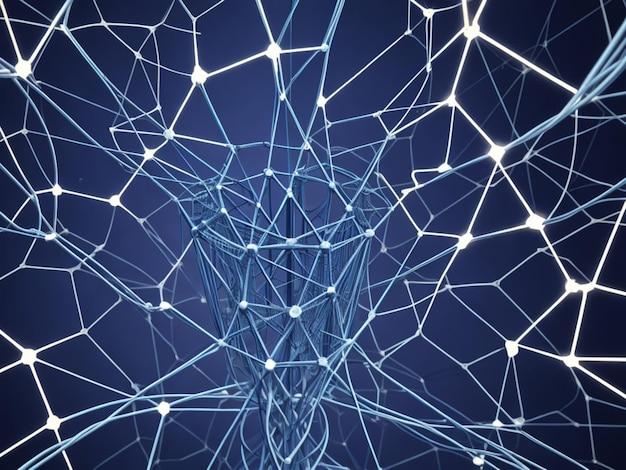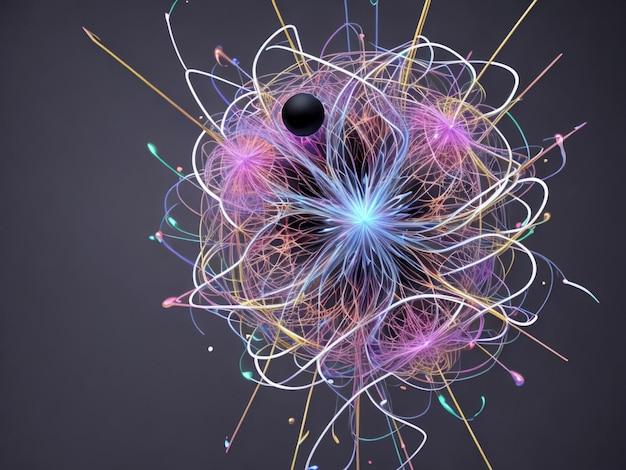With the rapid advancements in artificial intelligence and machine learning, terms like Perceptron and neuron have become increasingly popular. But what exactly do these terms mean, and how do they differ from each other? In this blog post, we will delve into the world of artificial neural networks to understand the distinction between Perceptron and neuron.
Perceptron and neuron are both fundamental components of artificial neural networks (ANNs). ANNs are computer systems inspired by the biological neural networks found in the human brain. They are designed to recognize patterns and make predictions based on their vast interconnectedness.
In this blog post, we will explore the meaning of Perceptron and neuron, their unique characteristics, and the specific roles they play in the field of artificial intelligence. So let’s dive in and unravel the mysteries behind Perceptron and neuron in the context of modern machine learning.

What Sets Perceptrons and Neurons Apart
Unmasking the Distinctive Features
If you’re diving into the world of artificial intelligence (AI), you’ve probably encountered terms like “perceptron” and “neuron” buzzing around. While they may seem similar at first glance, these two concepts have unique characteristics that set them apart. In this section, we’ll unravel the differences between perceptrons and neurons, giving you a clear understanding of their individual roles in the marvelous realm of AI.
The Perceptron: A No-Nonsense Machine Learning Workhorse
The perceptron, originally conceived in the late 1950s, is a fundamental building block of artificial neural networks. It’s like that dependable old horse pulling the AI carriage. The perceptron, at its core, is a simplified model of a biological neuron – straightforward, uncomplicated, and focused on making predictions.
Functionality in a Nutshell
A perceptron takes one or more inputs, applies weights to these inputs, and then sums them up. This resulting sum passes through an activation function to produce an output. Wait, what’s an activation function, you might ask? It’s like a bouncer standing at the doors of the neural network, deciding which signals get through and which ones get kicked to the curb. The output from the activation function becomes the perceptron’s final prediction.
Training, Learning, and Maybe a Little Drama
Training a perceptron involves tweaking the weights assigned to each input, achieving that perfect balance of accuracy and finesse. This process continues until the perceptron can confidently make predictions and fit snugly into its role as an AI superstar. Don’t be surprised if, during training, a perceptron displays a little drama, occasionally overshooting the mark or struggling to converge. It’s all part of the learning journey!
The Neuron: The Kooky Yet Complex Entity
In contrast to the simple perceptron, the neuron is like the eccentric genius of the AI world. It’s a highly intricate and biologically inspired entity that fuels the remarkable power of artificial neural networks. So, let’s put on our lab coats and delve into the captivating realm of neurons!
Anatomy of a Neuron
A neuron consists of three main components: dendrites, a cell body, and an axon. Think of dendrites as the antennas, capturing signals from other neurons. These signals then travel to the cell body, where they merge and potentially ignite an exciting chain reaction. Finally, the axon takes the merged signals and transmits them to other neurons in a series of mind-boggling electrochemical events.
Complex Processing and Mind-Bending Connections
Unlike perceptrons, neurons aren’t confined to basic prediction tasks. They boast an intricate web of connections that allow for complex processing and information integration. This enables neurons to perform a myriad of functions, ranging from pattern recognition to language processing, making them the superstar performers of the AI stage.
Learning and Plasticity: Neurons with a Growth Mindset
Neurons aren’t born knowing it all—just like us humans! They have an amazing ability called synaptic plasticity, which means they can adapt, grow, and strengthen their connections based on experience. This feature allows neurons to continuously refine their performance, gaining expertise and even changing their behavior with time. Talk about having a growth mindset!
Different Strokes for Different Folks
While perceptrons and neurons share some similarities, their differences are what make the AI world go round. Perceptrons are the workhorses, focused on prediction and providing a solid foundation for artificial neural networks. On the other hand, neurons take center stage with their complexity, versatility, and ability to perform a wide range of intricate tasks. So, the next time you hear these terms buzzing around, you’ll know the real differences – and maybe even impress a few AI enthusiasts along the way.

FAQ: What is the Difference Between a Perceptron and a Neuron
In the exciting world of artificial intelligence and machine learning, terms like “perceptron” and “neuron” are often thrown around. But what exactly do these terms mean? And is there a difference between them? In this FAQ-style blog post, we’ll dig deeper into these questions and shed some light on the fascinating world of perceptrons and neurons. So, let’s dive right in!
What Does Ann Mean Biblically
You might be thinking, “Whoa, hold on a second! Wasn’t this supposed to be about perceptrons and neurons?” Well, you’re absolutely right. But since we’re talking about AI and machine learning, “ANN” stands for Artificial Neural Network. So, there’s no biblical connection here, but it’s definitely a biblical proportion of knowledge when it comes to AI!
What is the Difference Between a Perceptron and a Neuron
Ah, the age-old question! While the terms “perceptron” and “neuron” are often used interchangeably, there’s a subtle distinction between them. Think of a neuron as the biological inspiration behind the artificial perceptron. Neurons are the fundamental building blocks of our brains, responsible for transmitting and processing information. Conversely, a perceptron is a simplified mathematical model inspired by these biological neurons. In short, perceptrons are the digital cousins of neurons, residing within the realm of artificial neural networks.
Is Multilayer Perceptron Deep Learning
Ah, deep learning! It’s like diving into the depths of the ocean, except instead of water, you’re surrounded by neural networks. Now, let’s answer the question. While a multilayer perceptron sounds fancy, it is indeed a type of deep learning. Deep learning refers to the utilization of neural networks with multiple layers, allowing for more complex computational tasks. So, the multilayer perceptron is like a deep diving AI, ready to unravel the mysteries hidden within your data!
Why is Perceptron Used
Well, my friend, the perceptron is a bit of an overachiever in the AI world. Its purpose is to learn patterns and make predictions based on those patterns. Imagine you’re playing a game of “Guess the Fruit” with an AI. You show it various fruits, and it tries to predict the correct answers. The perceptron plays an essential role here by learning from the data and adjusting its internal parameters accordingly. So, we use perceptrons to teach AI how to make intelligent guesses and predictions. It’s like having a math-savvy friend by your side during the fruit-guessing game!
What Does RNN Stand For
Ah, the mysterious acronym that haunts the dreams of many: RNN. But fear not, for we shall unmask its enigmatic meaning! RNN stands for Recurrent Neural Network. Now, don’t let the fancy name scare you away. Just think of it as a neural network with a memory. Unlike other networks that process data sequentially, an RNN has the ability to analyze and remember patterns in sequential data. It’s like having a super-smart AI buddy who not only knows what happened before but can also predict what might come next. Pretty cool, huh?
Phew! We’ve journeyed through the captivating realm of perceptrons, neurons, and artificial neural networks. We’ve discovered the differences between perceptrons and neurons, learned about multilayer perceptrons in deep learning, unlocked the purpose of perceptrons, and decoded the cryptic RNN acronym. Hopefully, you’ve had as much fun reading this FAQ-style blog post as I had writing it. Remember, in the ever-evolving landscape of AI, there’s always something new to learn and explore. So, keep your neurons fired up and your perceptrons at the ready. The future is full of endless possibilities!
